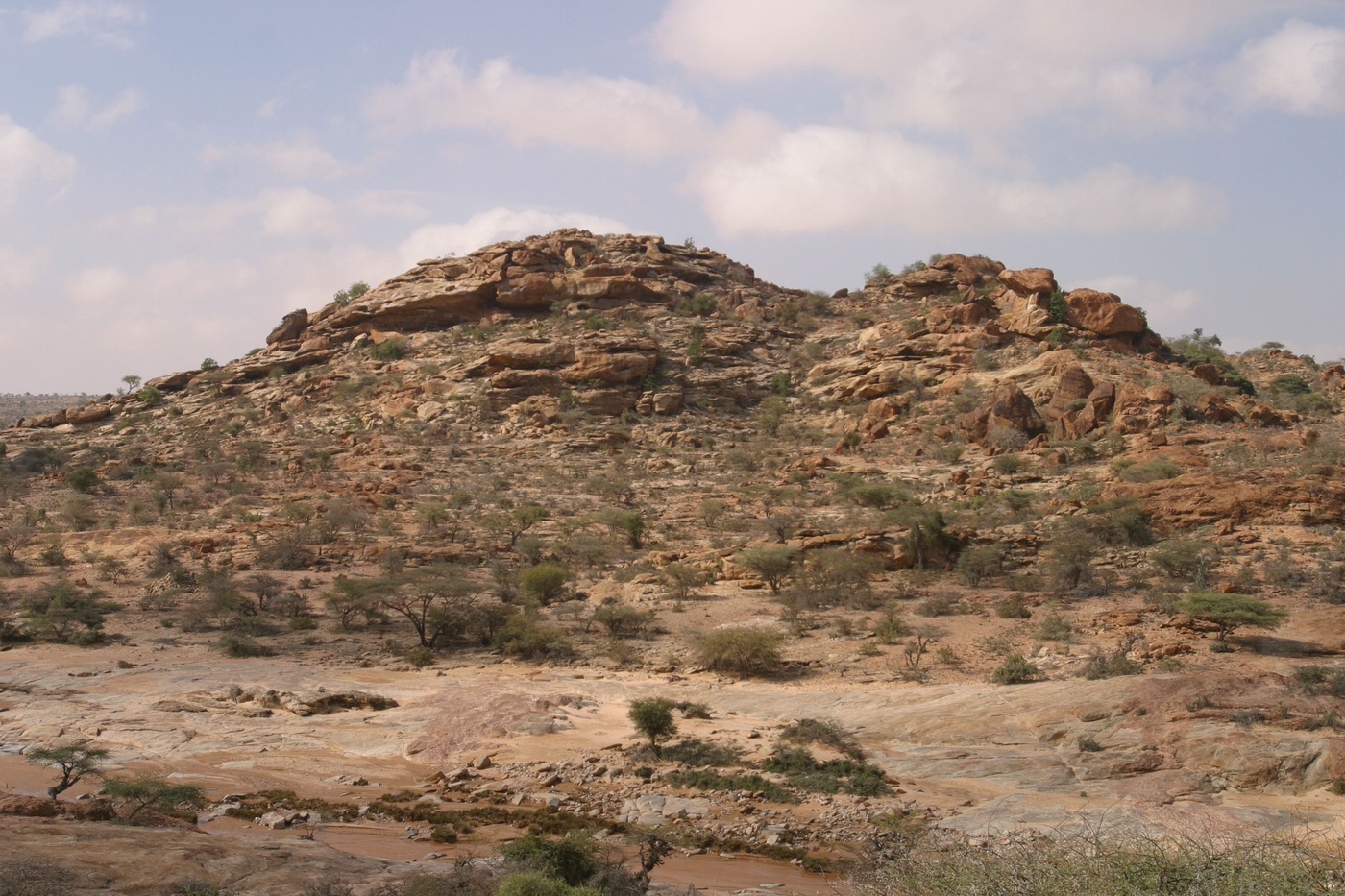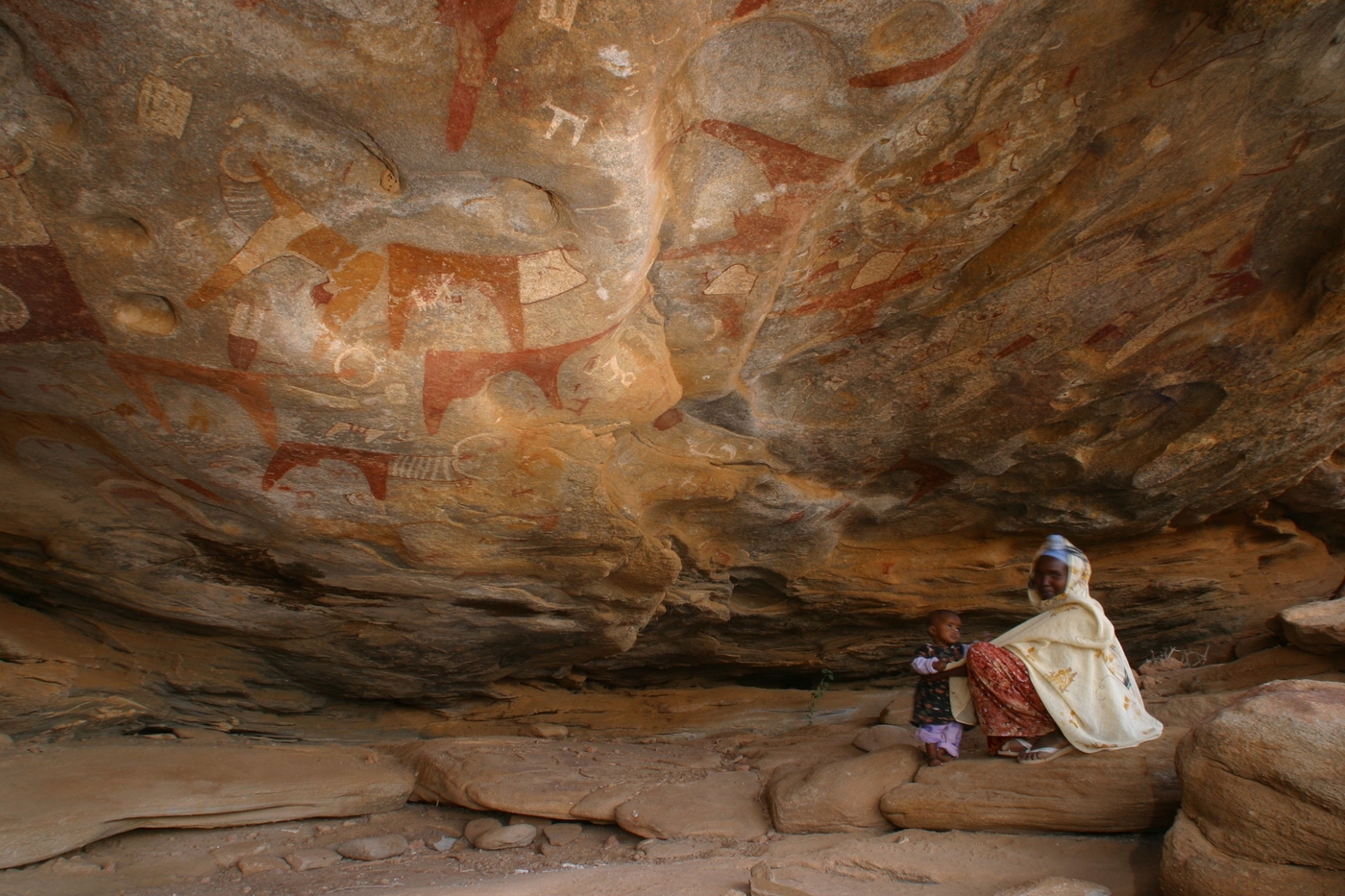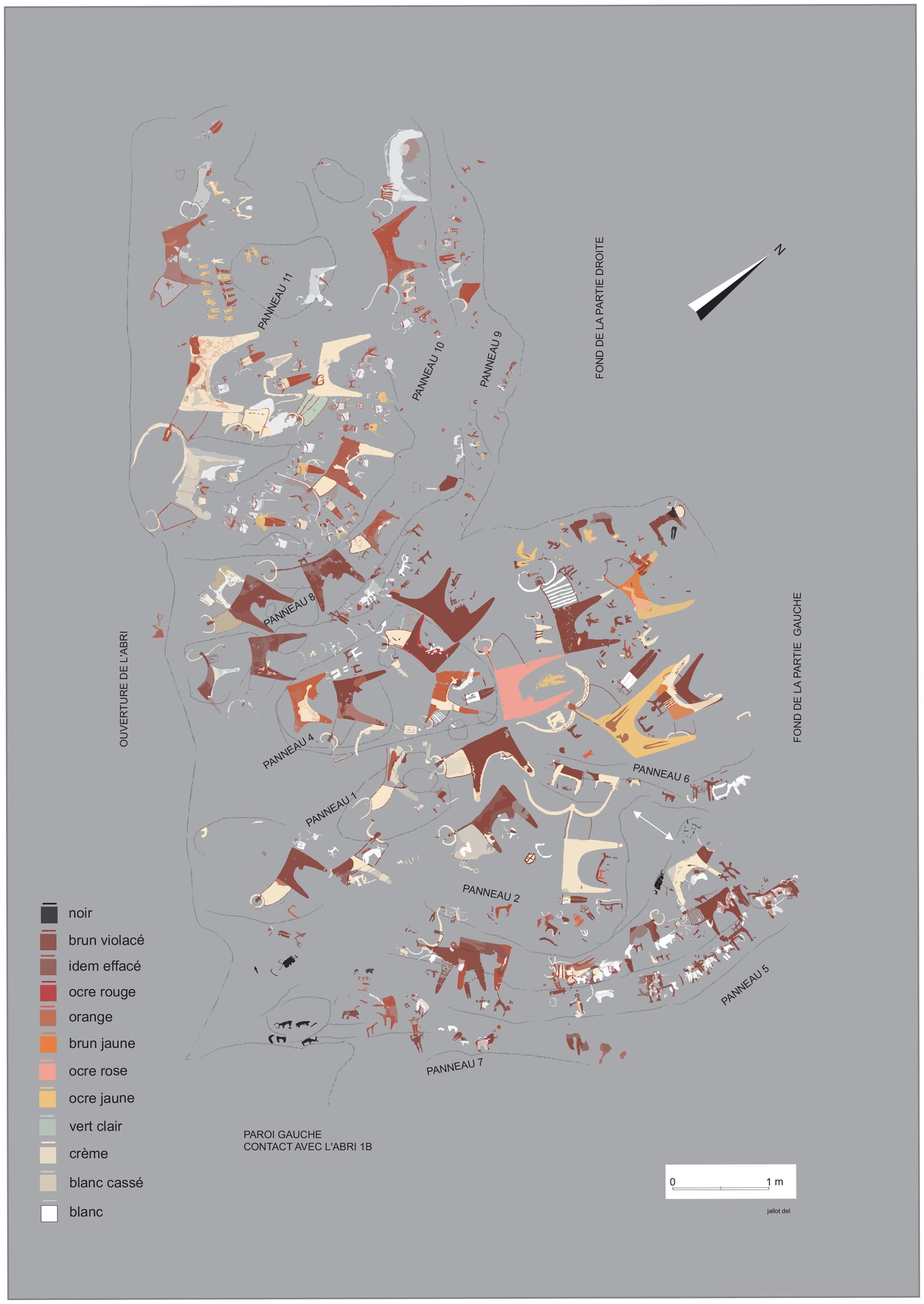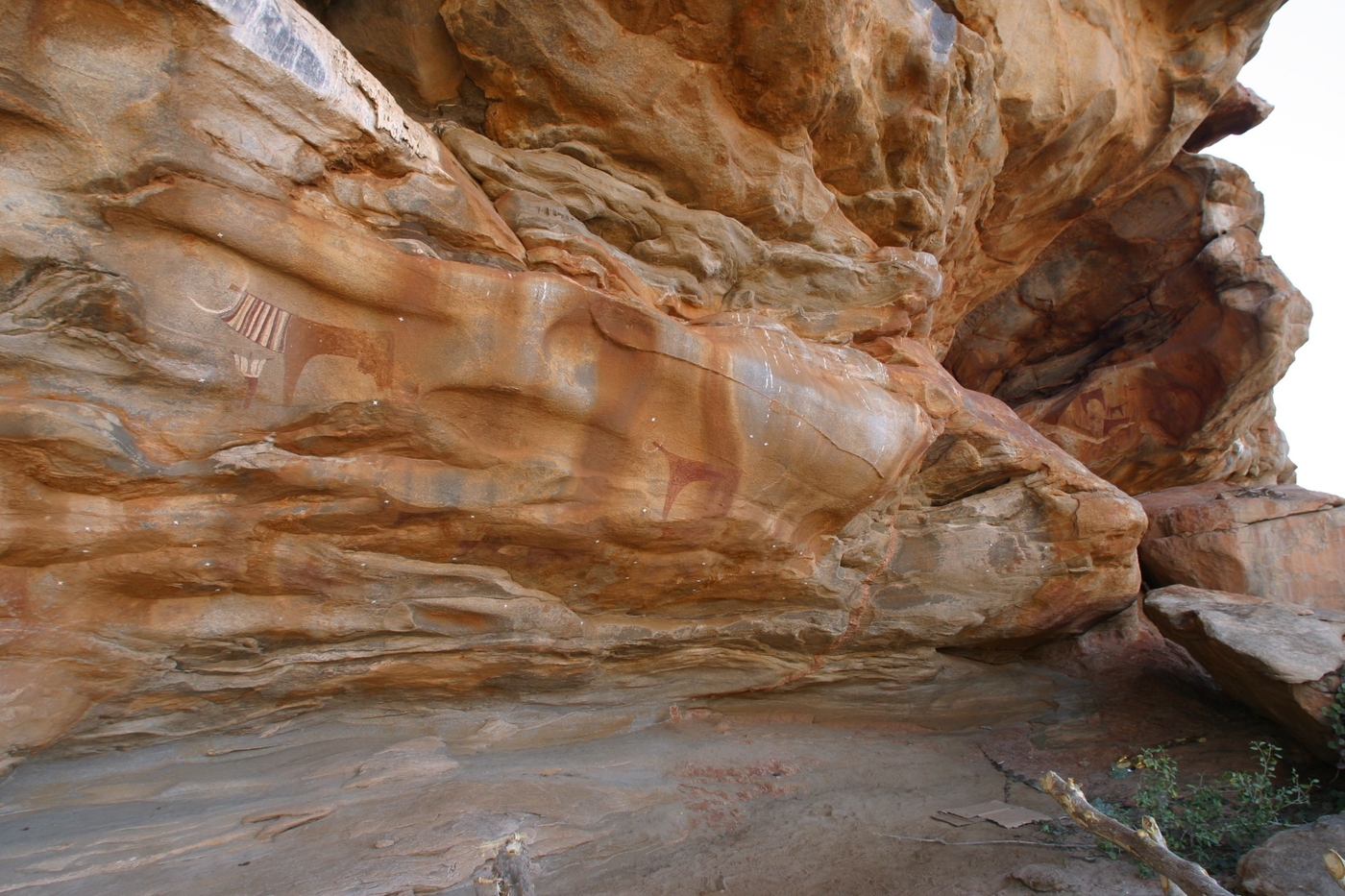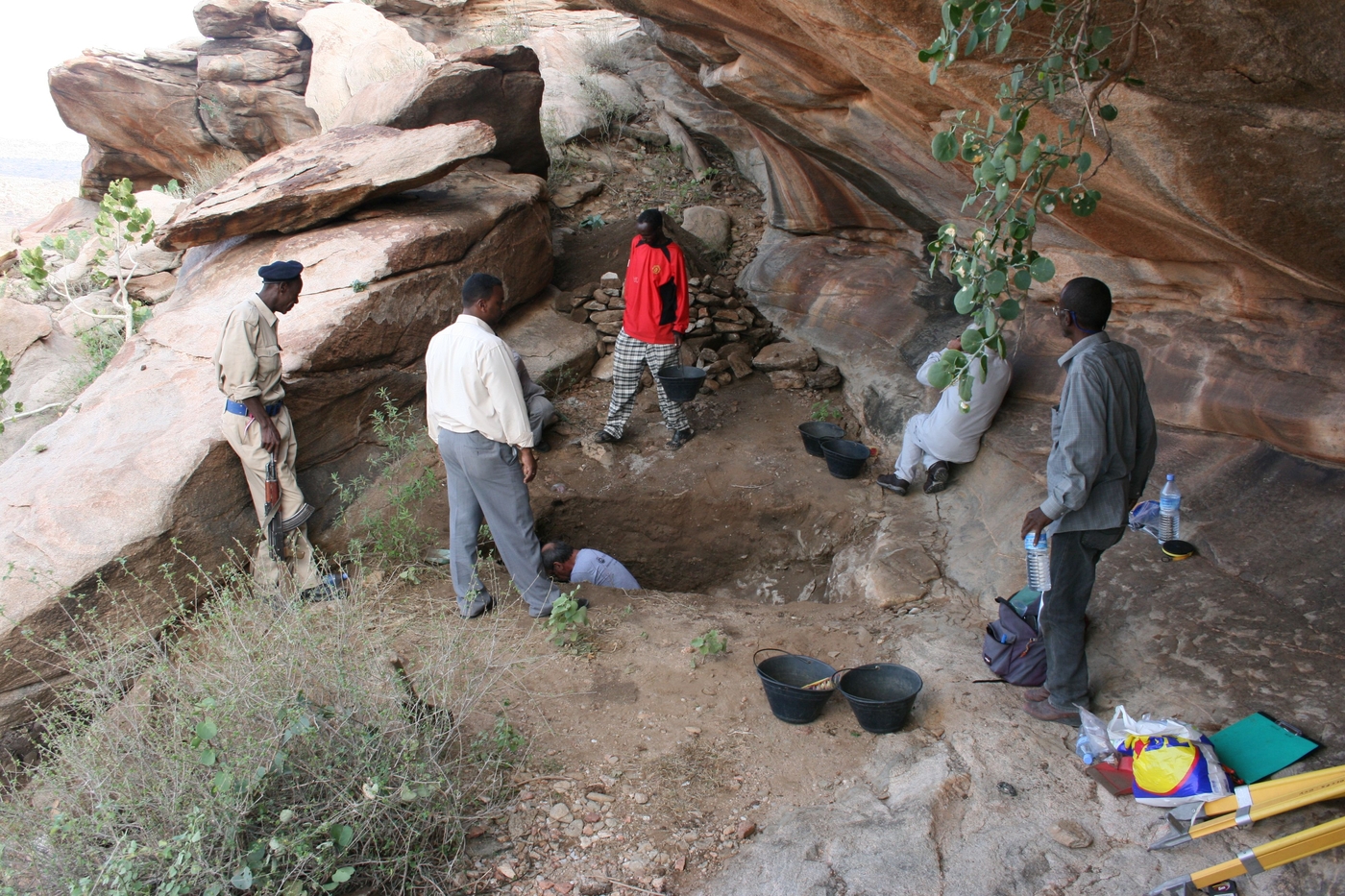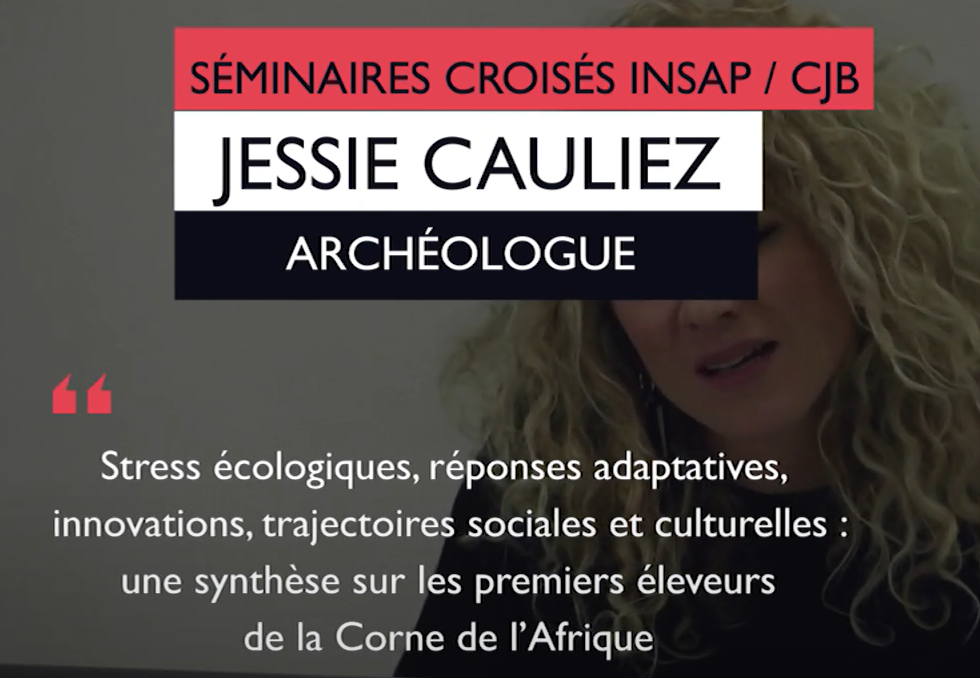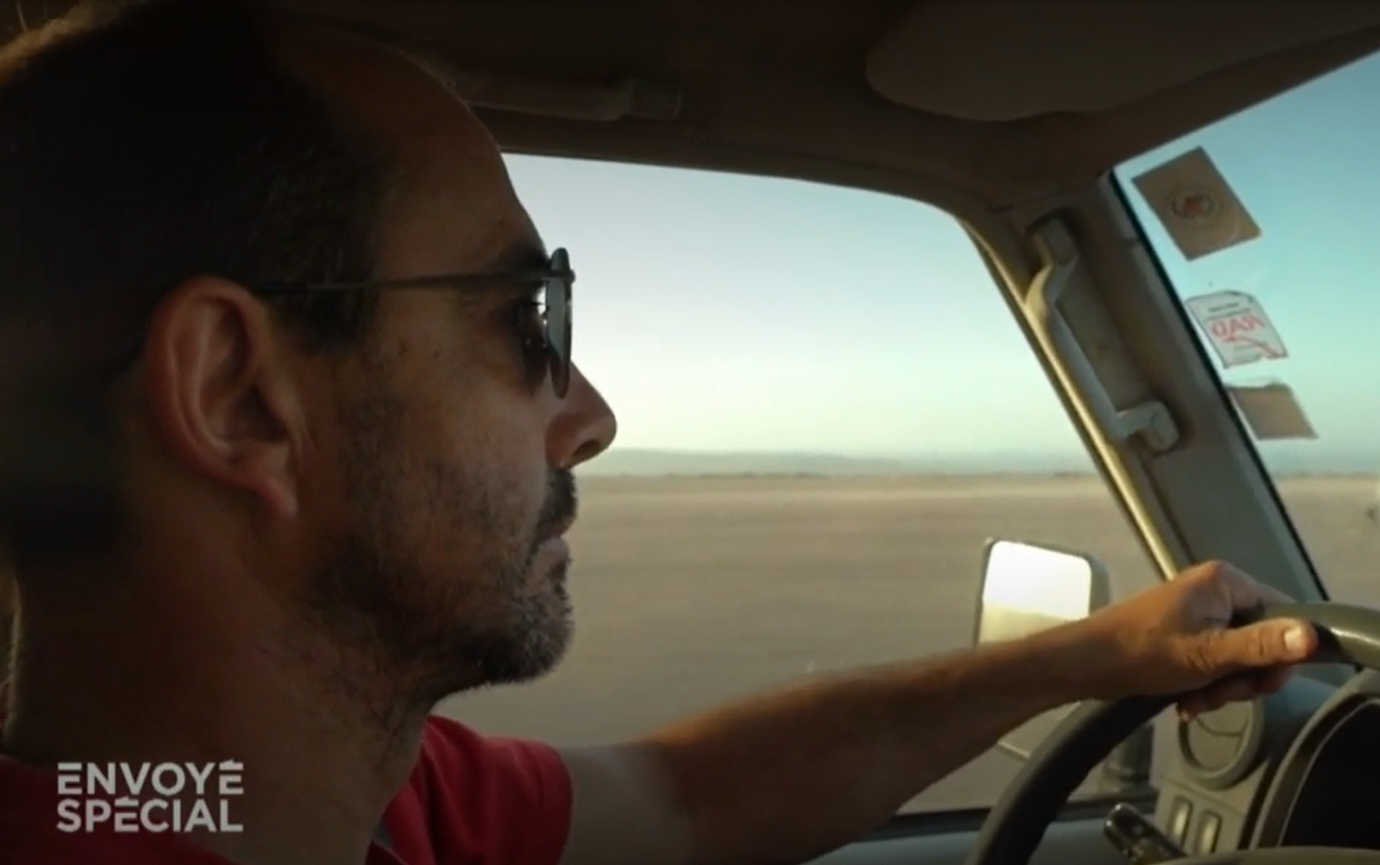Laas Geel: the African Lascaux
No one expected to find a wealth of rock art in Somaliland (a self-declared state to the north of Somalia) before a French mission discovered the site of Laas Geel in December 2002. The site is a granite hill containing some twenty rock shelters covered with polychrome paintings in an original style, the first of its kind found in the Horn of Africa. Following this discovery, many other decorated rock shelters were identified during surveys carried out in the country, making Somaliland one of the provinces with the most rock art in East Africa.
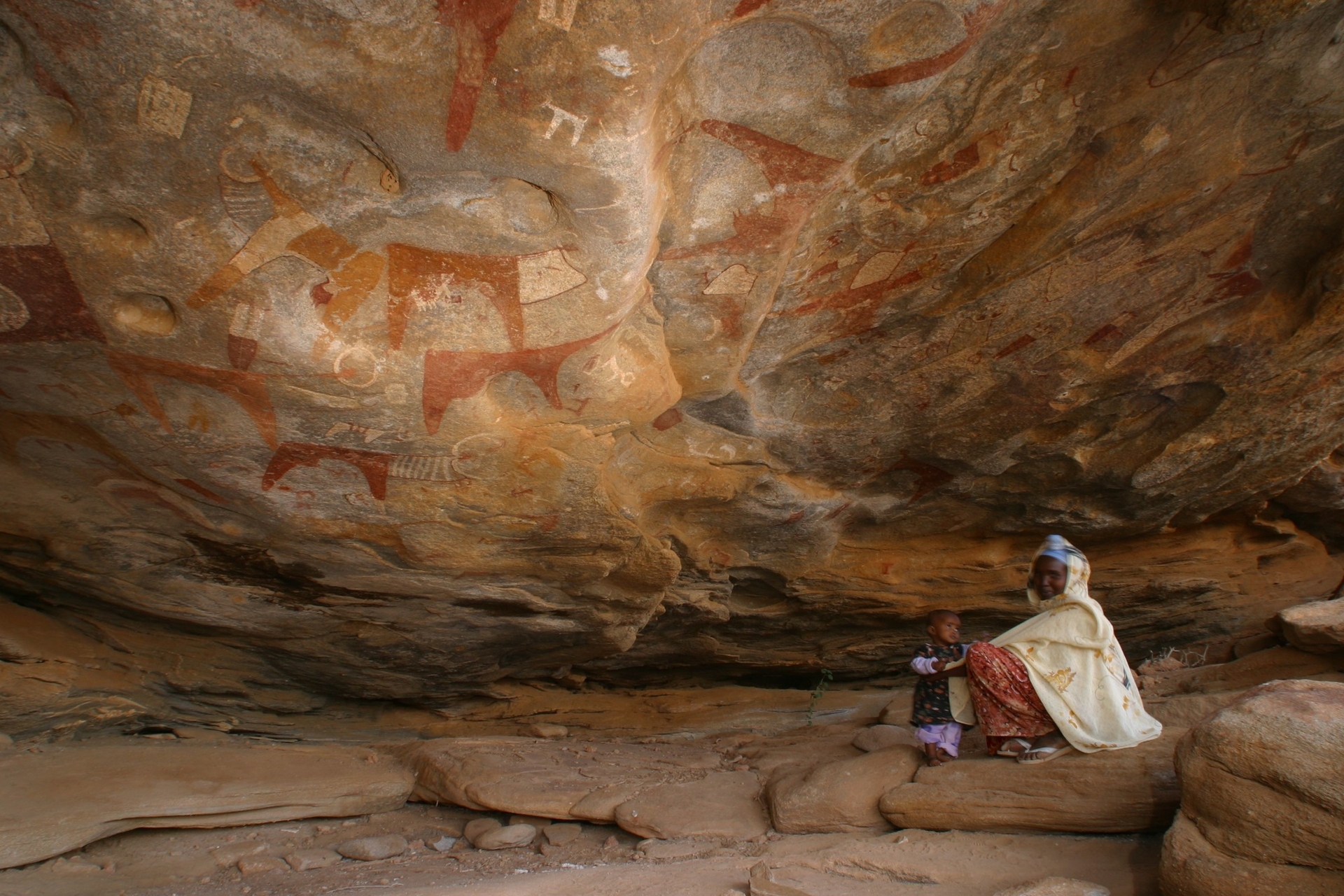
A long-neglected art
Until very recently, the rock art of Somalia was one of the least well known of any country in the Horn of Africa. Only a few rare sites in Central Somalia and within the reliefs dominating the Gulf of Aden had been briefly described before the discovery of the Laas Geel site in 2002 and the first surveys carried out by the team from the Premières Sociétés de Production dans la Corne de l’Afrique programme run by the Excavation Committee of the French Ministry for Europe and Foreign Affairs, which revealed a large number of decorated sites. For reasons of accessibility, research into the art of the first cattle breeders was only possible in Somaliland, an independent state since 1991, but still not recognised, where the Laas Geel site is located.
Representations of cattle in the 3rd millennium BCE.
Laas Geel and the thirty or so recorded sites contemporary with it are a good example of this early period dominated by representations of cattle with flat backs, the first domesticated animals to emerge in the region over the course of the 3rd millennium BCE. These cattle are accompanied by schematic representations of clothed people with wide-open arms.
A style that changes over time
Other styles subsequently emerged in Somaliland, as they did in other countries in the Horn of Africa, with new forms of cow, fat-tailed sheep and several wild animals. During a final phase, representations of animals were replaced by engraved groups featuring herds of dromederies. Although the security situation in the autonomous region of Puntland, in northern Somalia, a territorial and geographic extension of Somaliland, currently makes it impossible for foreign researchers to work there, this important centre for rock art in Somaliland is highly likely to extend into it.
About the mission
The Premières Sociétés de Production dans la Corne de l’Afrique mission (French Ministry for Europe and Foreign Affairs and IRAH in Djibouti) has been directed since 2013 by J. Cauliez (CNRS, UMR 5608 Toulouse). It was created in 1984 by R. Joussaume and led from 2001 to 2013 by X. Gutherz.
Project supported by the French Ministry for Europe and Foreign Affairs on the advice of the Excavation Committee (Commission des fouilles).
The mission’s other sites:
Useful links
- Presentation of the mission on the website of the Laboratoire Traces UMR 5608 – Toulouse
- The mission has been awarded the SEEG label: Global ecology study sites or SEEG (CNRS – INEE programme)
- Mission implemented under an agreement with the Centre Français des Études Ethiopiennes IFRE 23 – USR 3127, Addis Ababa, Ethiopia
- Mission implemented in partnership with the Institut des Déserts et des Steppes
- Sponsorship


